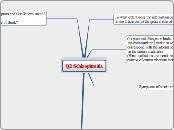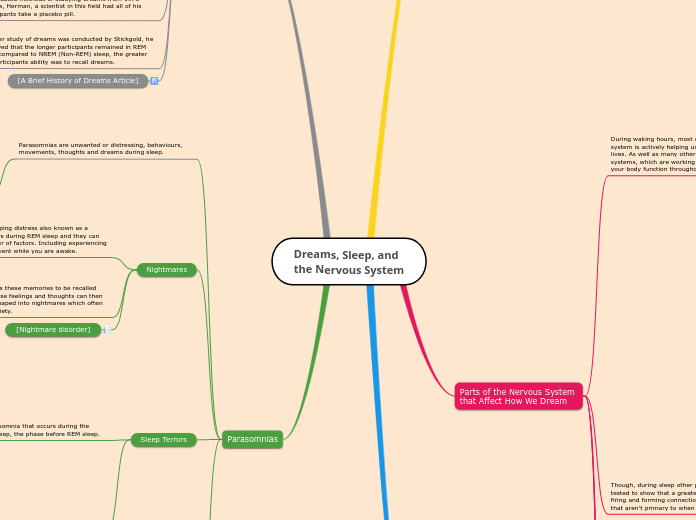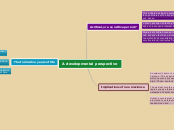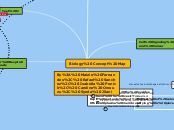Q2 Schizophrenia
Symptoms of sciciphrenia
Negative Symtoms
Social Withdrawal
Cognitive Impairments
undordered thinking
Inabiltiy to focus attention
Inabilty of filtering out unimportant stuff
Positive Symptoms
Hallucinations
Auditory
Visual
hyothesis
Schizo vs. Epilepsy
However the missing sync is only oneof the problems in schizo - also problems in attention
Epilepsy caused by the synchronous firing of many neurons ending inSeizure
Perhaps missing sync in schizo causes 2 "I" s one of which is less dominant and only heard
Schizophrenia could be seen as a mild for of Epiliepsy
Drug work by decreasing efficacy of overactive sodium channel
Perhaps those very fast electrical synapses syncronize other connected neurons with the help of those NDMA coincidence detectors.
Perhaps solution to major problem of communication: in brain if 2 neurons oscillate at the same speed the information belongs together
Book 1 Page 142 Binding Problem:there is no sinlge point where information flows togher: Where is shape colour category and sound of a car connected into one unified perception or awarness of a car
How much are NMDA receptors and Oscillations linked?Evidence in Book? / Plausibility from knowledge of Book?
Article
Ocillations
Where
not stated
What?
Disrupted patterns of oscllations seen in Schizophrenia
NMDA
What ...
Disrupted Oscillations
Lacking or malfunctioningNMDA receptors as causal
Where ...
Generally in the brain
Role in Interneurons
Books
Where does one find NMDA receptors?
Book: Amygdala
Cole in fear conditioning
Book: Hippocampus
Role in Learning / LTP (Book 5 Chapter 1)
What is a NMDA Receptor?
Hebbian Learning
Hebbian Synapse
A synapse that can be modiefied / made more efficient
In hebbian one neuron mightnot cause the other one to firebut be merely active at the same time
Modification of the synapse: Learing is increasing the efficiency of firing
By firing the post synaptic neuron is modified to work more efficient next time(more likely to fire)
Book 4 page 24Glutamate acts on many different types of receptor. One type, called the N-methyl-D-aspartate receptor (or NMDA receptor) is a neurotransmitter-gated ion channel that,unlike most other glutamate receptor-channels, is permeable to calcium ions. Inappropriate activation of this receptor induces toxic levels of intracellular calcium which canultimately lead to cell death (this toxic mechanism, termed excitotoxicity, is largely responsible for the brain damage induced by ischaemia and stroke)
role memory andLearning
Book 39 role in the initiation of memory consolidation
STM-->LTM
LTM
Strong Activation of NDMA-->LTM
STM
Activation of NDMA-->STM
Book 4 Initiation of Protein synthesis needed to maintain LTP
role several types learning
Book Classical Conditioning
Book 38: especially spatial learning
Book 4 NMDA is a receptor in Hipporcampal Glutamatergic neurons=a Glutamate gated Ion channel
Book 4 Page24-NMDA receptor is malregulated it can be toxic
Book: The dual role of the NMDA receptor as an activity coincidencedetector and gateway for calcium entry during the induction of LTP
Book5: It is the influx of calcium ions into the postsynaptic cell, via the NMDA channel, that triggers the biochemical cascade that leads to the increase in synaptic efficiency
Book 5 page 35: NDMA receptor acts as a conincidence detector– it opens only when there is a conjunction of neurotransmitter in the synaptic cleft and a critical level of depolarization in the postsynaptic neuron, a temporal pairing of presynaptic and postsynaptic activation: a Hebbian synapse.
Book 4 Glutamate: The most widespread excitatory neurotransmitter in the brain but active i.e. in the hippocampus
Book 4 page 23:and aspartate excite virtually all neurons in the brain and spinal cord. Upon release from aglutamatergic terminal, glutamateis inactivated by reuptake intothe presynaptic and postsynaptic neurons
What are oscillations?
Role in the singalling of elctrical synapsesbook 4 page 14
What do they do?
Book: Current Fuction is only Speculative: Current data suggest that the role of gap junctions is to facilitate instantaneous electrical rhythmicity in populations of neurons, if not whole brain structures. It has even been speculated that ultra-high frequency oscillations represent the ‘mind’ itselfBook: Whilst the function of these gap junction oscillations remains amystery, it has been proposed that in the cortex and hippocampus they may be implicated in cognitive processing, sensory perception and certain forms of distributed memory formation."
Book: What and where Elctrical Synapses produces Oscillations:"In the retina of the eye, for example, they are involved in the local integration of electrical activity between ensembles of retinal cells. Elsewhere in the brain they are involved in the generation of high-frequency electrical oscillations, similar to those seen during an epileptic seizure.
Cognitive processing
Distributed Memoryformation
If whole modules are distributed I.e. an emotional memory and the emotion itself the firing of thosestructures may need to besynchronized.
If memory is ditributed, what belongs together has to be signalled somehow
Were do electircal synapses exist
Role in In hippocampus and Cortex
Role in the retina
(b) potential changes in brain oscillations and neurotransmitter function in schizophrenia correspond with the information presented in the course materials?(Hint: oscillations are mentioned in the course in the context of communications between neurons.)
Oscillations: Signal Theory
To what extent does the information presented in the article on (a) the general role of NMDA receptors and ...
Role of NDMA receptors
What does the book say?









